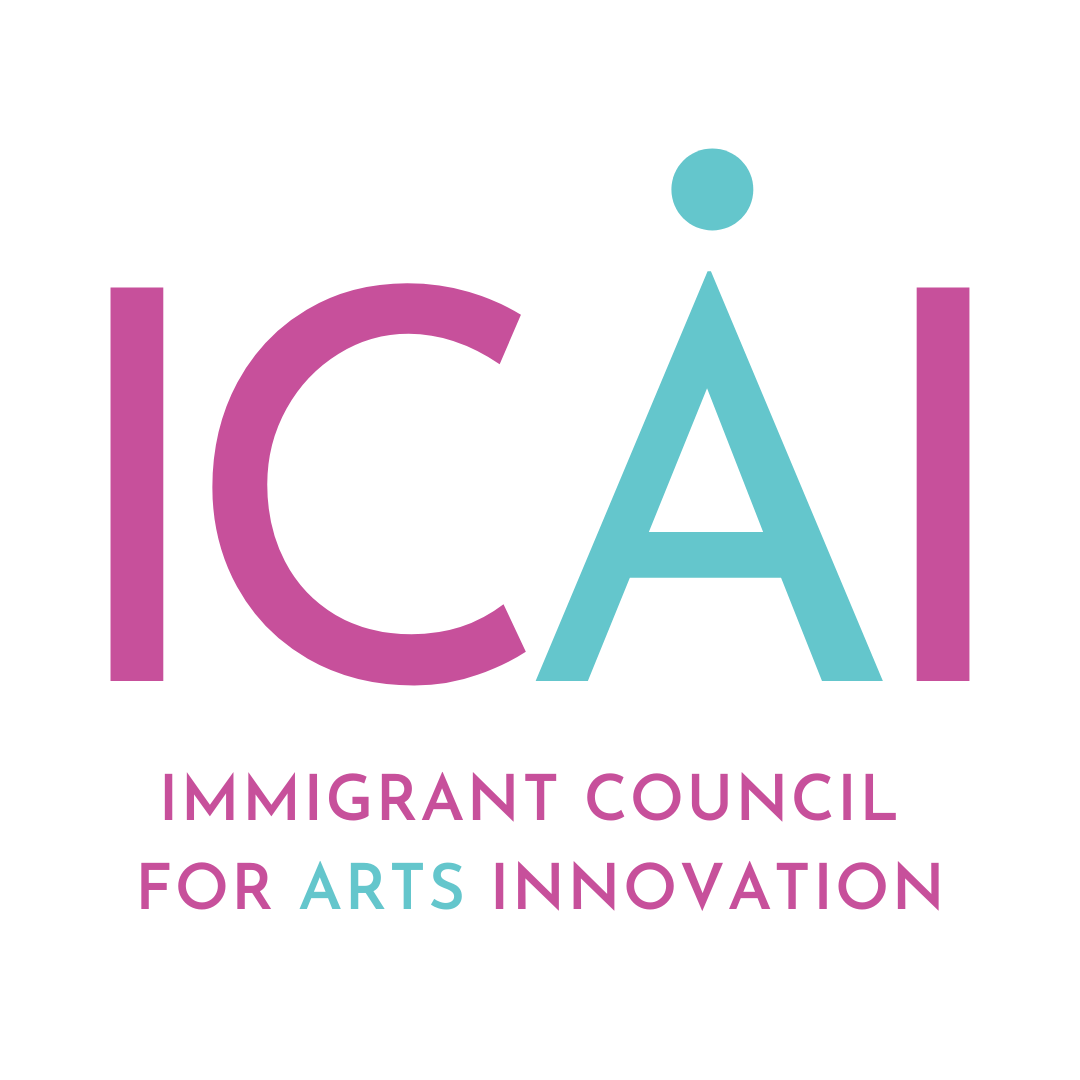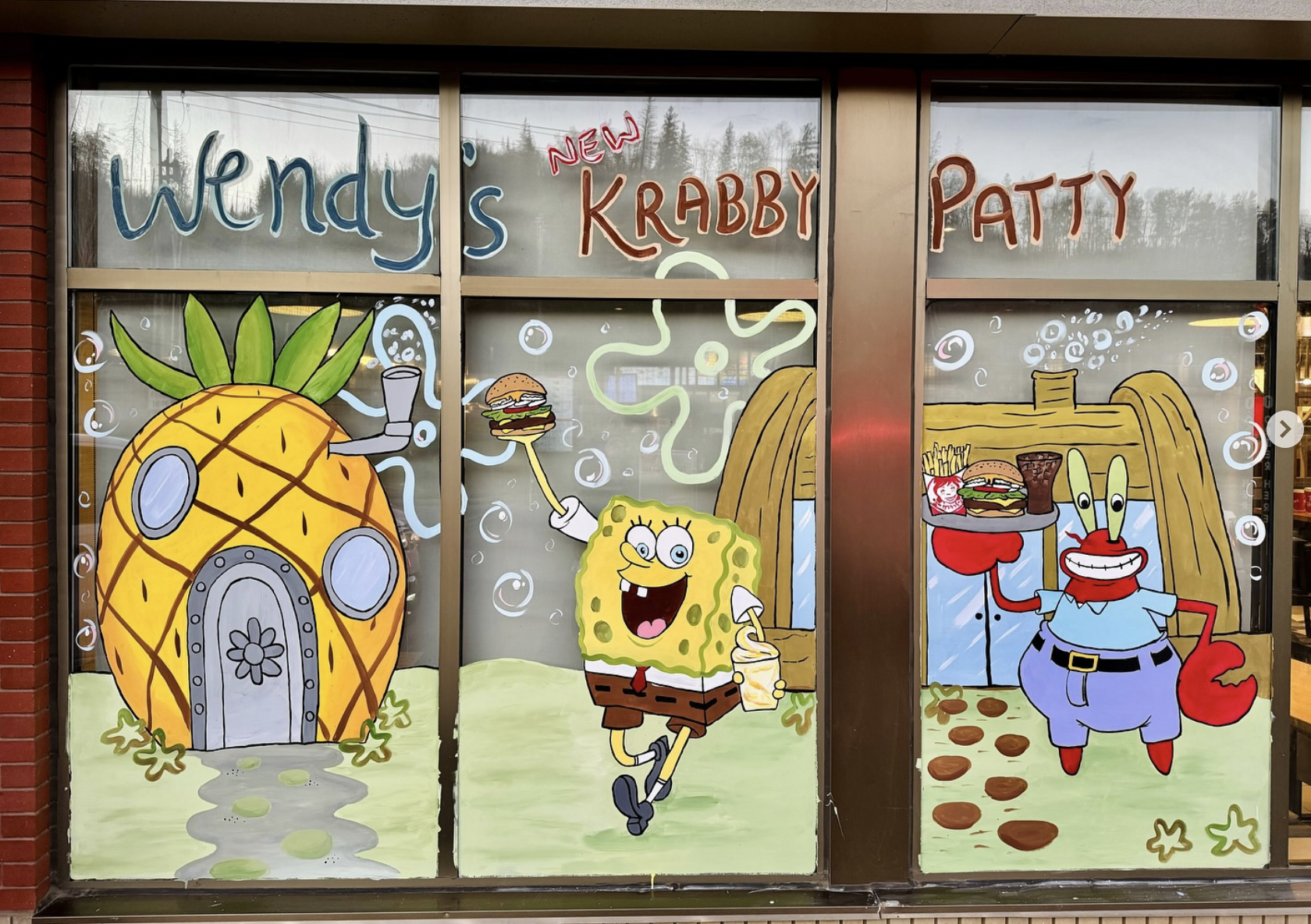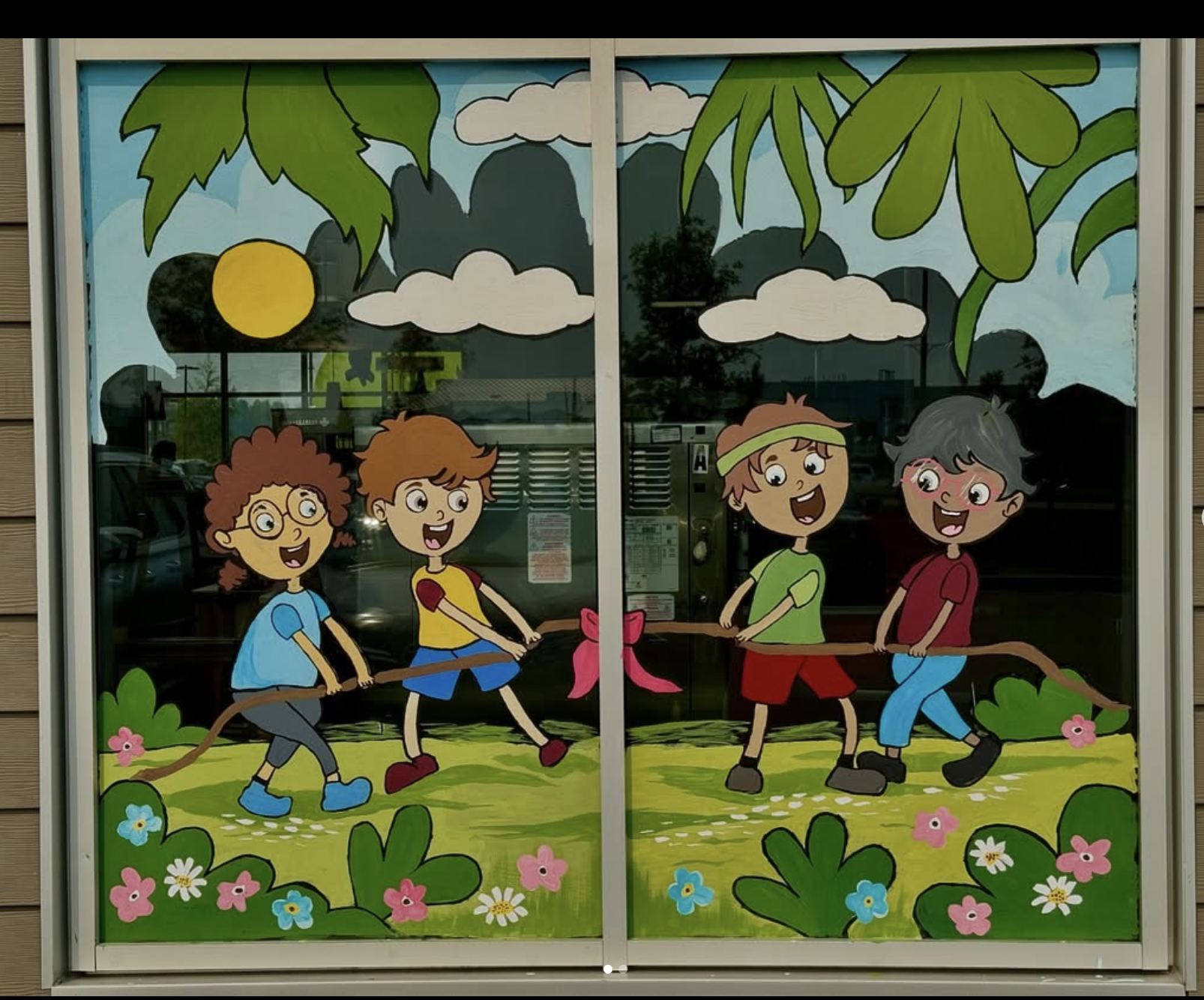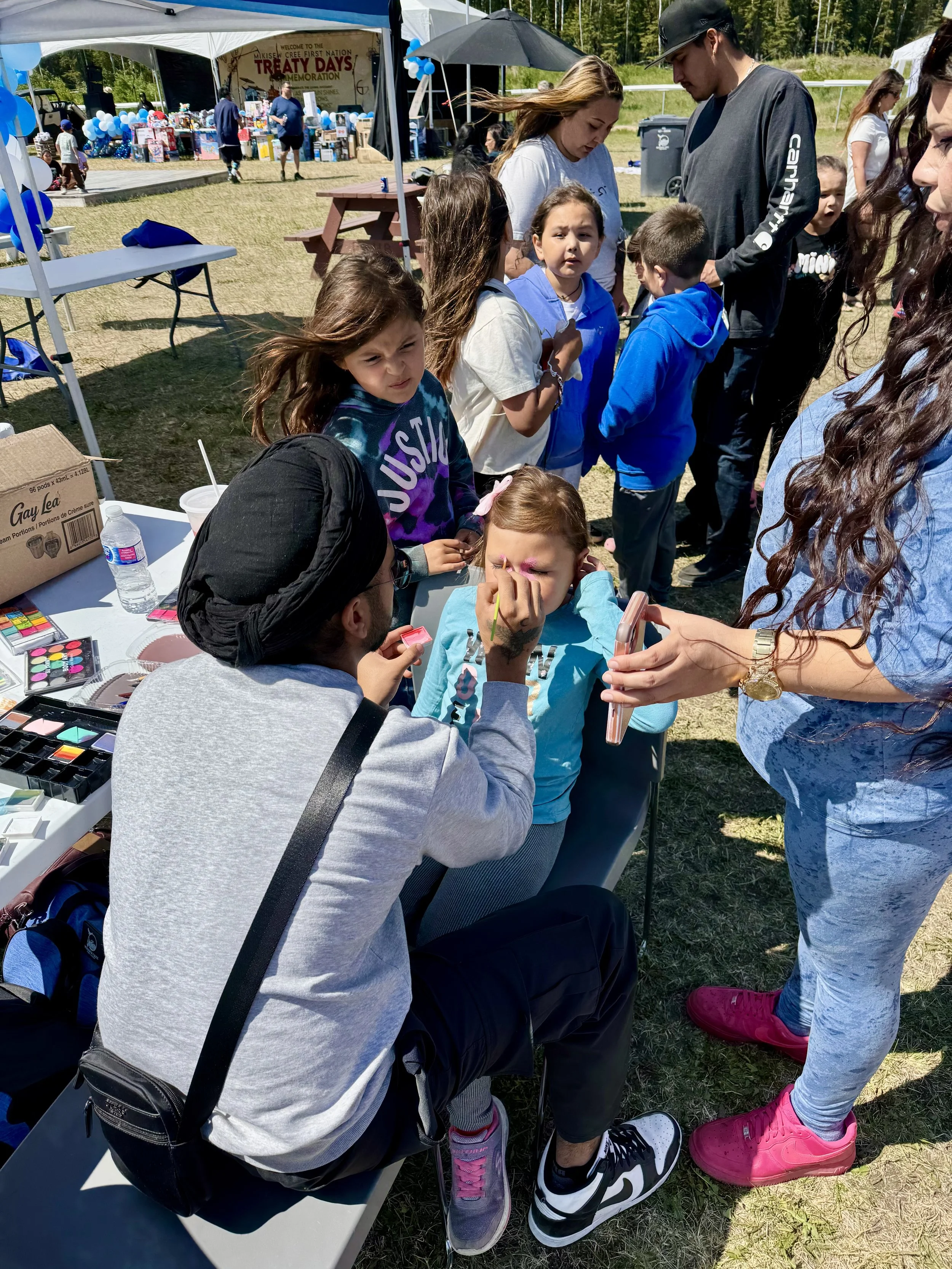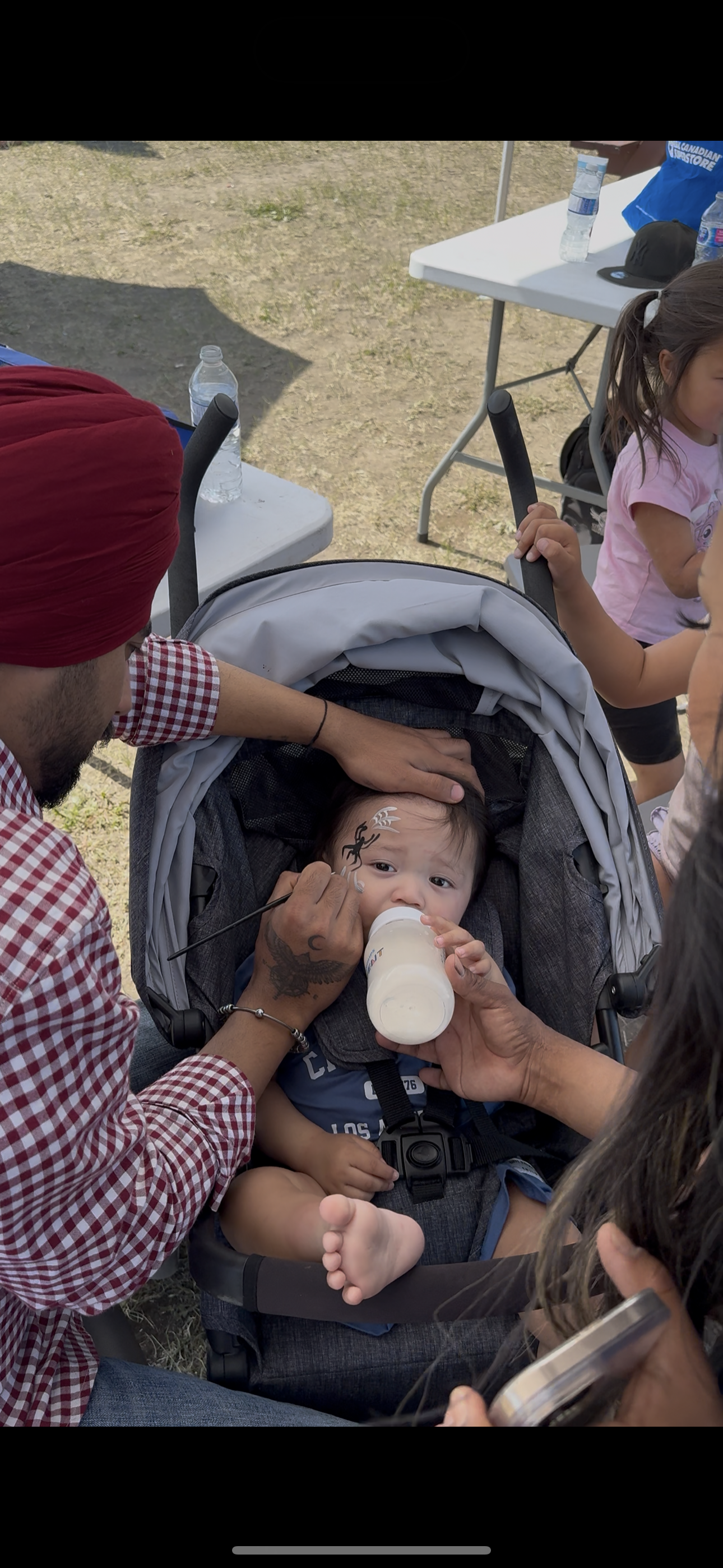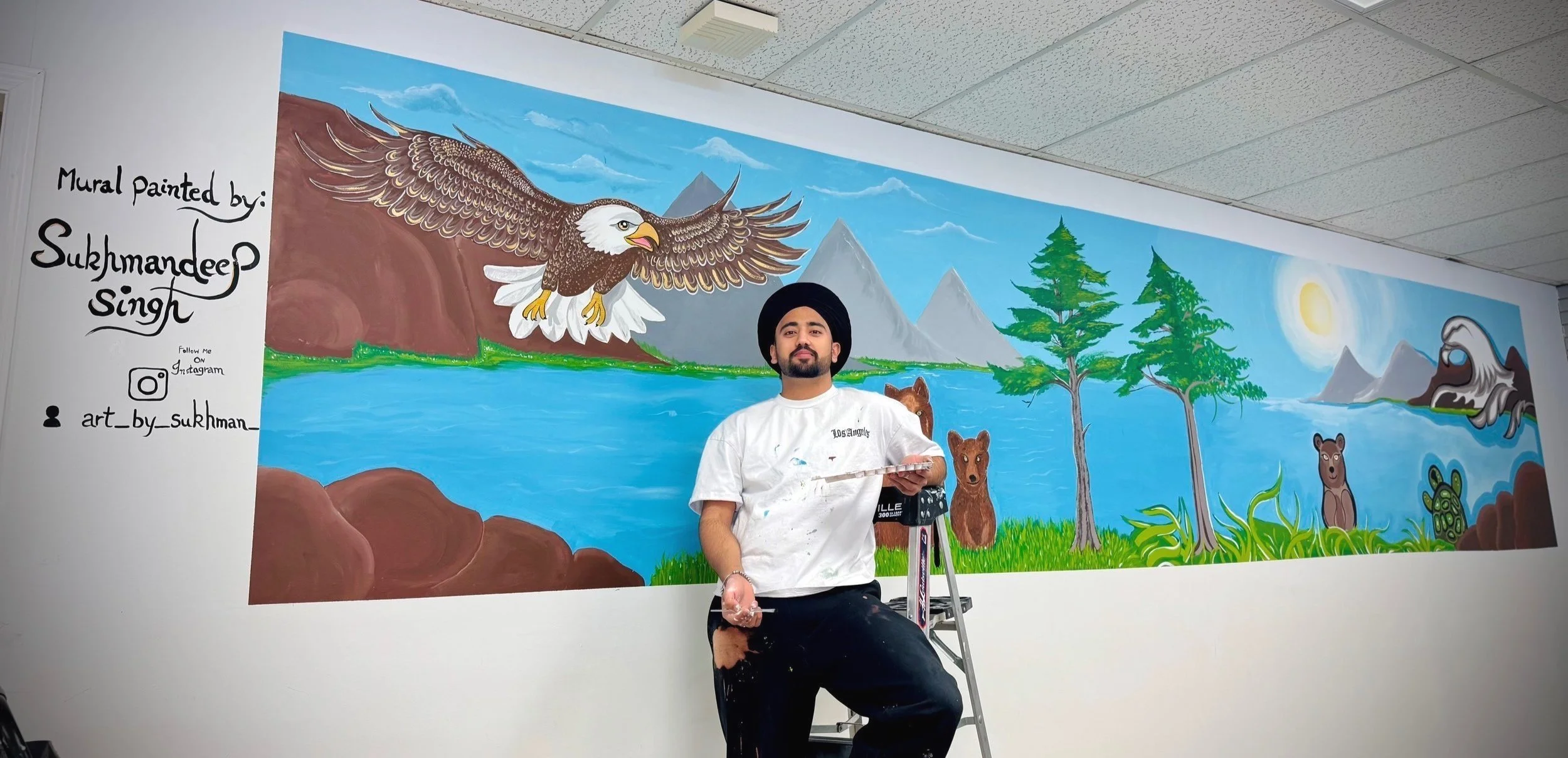Artist of the Month: August 2025
Visual Artist
Based in Fort McMurray, Alberta
Artist Bio
Sukhmandeep is a visual artist based in Fort McMurray, originally from India. He creates work that blends realistic detail with abstract expression, using a wide range of mediums including murals, canvas paintings, window art, and face painting. His art often appears in local businesses, community events, and public spaces. During a recent artist residency, he led workshops for people of all ages—both locally and in Fort Chipewyan—and completed a large mural that reflects his evolving style. Through his art, Sukhmandeep aims to tell meaningful stories, spark connections, and bring color and creativity to everyday life.
Can you start by introducing yourself and sharing a bit about your journey into the arts?
My name is Sukhmandeep Singh, and I’m a visual artist originally from India, now based in Fort McMurray, Alberta. My journey into the arts began at a young age — painting was always something that gave me joy and a sense of purpose. In India, I was honored with an award for the best wall painting in my city, which gave me the confidence to keep pursuing my passion. After moving to Canada, I continued creating art in different forms — from canvas paintings to murals, face painting, and window art for local businesses. Over time, I’ve also explored more community-driven projects, like leading workshops in schools and even remote areas like Fort Chipewyan.
What do you enjoy most about creating art in public spaces or engaging with the community through face painting?
What I enjoy most about creating art in public spaces and doing face painting is the instant connection it creates. Art becomes something shared — not just something people look at, but something they can experience and enjoy in the moment. One of the highlights for me recently was visiting Fort Chipewyan during the Mikisew First Nation Treaty Days celebration. I did face painting for the community, and it was such a joyful experience. The kids were excited, their smiles were priceless, and the energy was so positive and welcoming. It reminded me why I love this kind of work — it’s not just about creating something beautiful, but about bringing people together, celebrating culture, and adding happiness to shared moments. Whether it’s through a brushstroke on a wall or a small design on a child’s face, that connection is what makes public art so meaningful to me.
What techniques or materials are you most excited to work with right now?
I specialize in vibrant and engaging face painting, always using safe, non-toxic colors to ensure a fun and worry-free experience for all ages. Alongside this, I create dynamic canvas paintings using acrylics, bringing bold colors and life to each piece. I also explore texture art by incorporating plaster into my canvases, adding a unique three-dimensional quality that invites viewers to connect with the tactile elements of the work. For my wall murals, I use eggshell paints that provide a perfect shine and smooth finish, creating visually striking designs that enhance any space. The same high quality, easy-to-remove colors are used for window paintings, allowing for beautiful, temporary artwork that can be refreshed or changed without damage. Most recently, I’ve been expanding my creative practice by experimenting with resin and moulds. This new approach allows me to play with glossy finishes and sculptural forms, opening up exciting possibilities to combine fluidity and structure in my art.
Your art combines realism and abstraction within the same piece. How do you bring those two styles together in a way that feels natural and expressive?
For me, combining realism and abstraction is like telling a story that moves from the visible to the emotional. I usually start with realistic elements — like animals, landscapes, or symbols — to ground the viewer in something familiar. Then, as the piece evolves, I gradually shift into abstraction to express deeper emotions, movement, or energy that can’t always be captured with detail alone. The transition between the two feels natural because I don’t see them as separate — they’re two sides of the same idea. Realism tells the “what,” and abstraction reveals the “why” or “how it feels.” I use color, texture, and form to guide that shift, allowing the viewer to travel through the piece emotionally as well as visually. It’s my way of creating balance between structure and freedom, and inviting others to feel something personal within the flow of the work.
Can you share what your residency in Fort Chipewyan meant to you, and what themes you explored in your mural there?
My residency in Fort Chipewyan was a truly meaningful experience for me. It was my first time visiting a remote northern community, and the warmth and openness of the people there left a lasting impression. Being able to connect through art — especially with youth during the workshops — reminded me how powerful creativity can be in bringing people together, even across different backgrounds and experiences.
The mural I created was in fort McMurray which explored the theme of transformation — a visual journey from realism to abstraction. It starts with recognizable elements like wildlife and nature and gradually flows into symbolic, abstract forms. This transition represents not only the evolution of artistic style but also how culture, identity, and imagination can blend and shift over time. Creating this piece in Fort McMurray felt like a way of honoring both the natural beauty of the land and the depth of stories that live within the community.
As someone who’s navigated multiple cultures and artistic practice, what advice would you give to other newcomer artists trying to find their voice?
For newcomer artists navigating multiple cultures and artistic practices, my advice is to embrace your unique experiences and let them shape your creative voice. Explore different techniques and mediums without fear, knowing that every struggle and experiment contributes to your authentic expression. Patience and resilience are key—your voice will grow stronger through the journey.
Follow Sukhmandeep:
